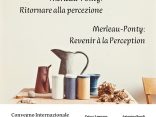Autore
Indice
- Introduction
- Different eugenics in diverse countries and times: the concept of eugenics in an historical context
- A social eugenic view: a Latin perspective on eugenic measures
- Toward human enhancements
↓ download pdf
S&F_n. 27_2022
Abstract
From genome editing to human genetic enhancement: a new time for discussing eugenics?
In the last decade several Authors strongly suggested that genome editing technologies are just related to gene therapy rejecting any eugenic discussion about them. Actually, this dispute is mainly influenced by the previous terrific consequences of eugenic measures rather than by the real consequences that genome editing technologies could have on the future societies. Here we discuss genome editing technologies as eugenic approaches in order to assess that if we continue to rebrand them as therapies, we will simply favor their market in place of their true social acceptance. At the same time, these technologies also strengthened a possible use of genetic manipulation for the human genetic enhancement, making some previous eugenic goals technically feasible. As a consequence, it is timely to discuss which kind of human enhancements we would like to accept/adopt and who will be the main drivers (parents, medical doctors, politicians, scientists, …) of this change that will affect our future offspring.
- Introduction
In the last two decades human molecular genetics made remarkable advances not only in developing new high-throughput techniques for DNA sequencing (Next-Generation Sequencing, NGS), but also in term of understanding of the biological bases of several human diseases[1]. We at present know, for instance, in great details mechanisms underlying the cause of many human diseases and we are aware that about the 65% of people has some kind of health problem as a result of congenital genetic mutations and one in five healthy adults carries disease-related genetic mutations[2]. At the same time, the availability of numerous bioinformatic tools favoured computational biology so that now we can easily access, harness and analyse molecular data1.
As a consequence of these changes, a spectacular series of projects made available huge amounts of data to further improve our knowledge of the human genome. For instance, the 1000 Genomes Project provided a deep characterization of the human genome sequence variation as a foundation for investigating the relationship between genotype and phenotype[3], whereas The Cancer Genome Atlas generated a vast and comprehensive dataset describing the molecular changes that occur in cancer[4].
The combined use of NGS, bioinformatic facilities and big data in human genetics favoured further developments that allow us nowadays to obtain human genome sequences at costs lower than US$1,000 per genome favouring the development of personalized therapies and the liberation of drugs that otherwise were unusable, through identification of the few individuals with adverse responses1.
In a way that is unprecedented in the history of life sciences, multiple editing technologies have been developed in the last decade with improved specificity, accuracy and efficiency2. In particular, CRISPR has revolutionized the genome editing because it is as robust as simple and flexible to use and several more precise and super-efficient CRISPR-Cas systems have been recently derived from engineered variants, various bacterial species and distinct classes of CRISPR targeting mechanisms[5].
The concomitant availability of personal genomes and editing technologies favoured the beginning of several clinical trials aimed at the control of some genetic diseases, making genome editing a legitimate and ethically justifiable tool2. Actually, the potential applications of genome editing do not stop with the prevention and treatment of human disease, since these technologies also strengthened a possible use of genetic manipulation for the human genetic enhancement, making some dormant eugenic goals technically feasible[6].
Genome editing, indeed, represents an intentional and deliberate modification of the human genome to “improve” individuals in term of elimination of mutations related to specific genetic diseases. However, these technologies may quickly move from disease prevention and therapy to attempts to modify and “enhance” human physical and intellectual traits. Even if controversial2, several experiments showed that it is possible to reduce the number of children born with genetic diseases and disorders by germinal genome editing according to the past negative eugenics[7],[8].
By the late 1920s, negative eugenics favoured in several countries the passage of laws allowing involuntary sterilization programs aimed at preventing the birth of human beings with specific heritable diseases12,13. As a consequence of these programs, more than 60,000 people were sterilized in USA between 1935 and 1975, whereas over 62,000 people were sterilized in Sweden. In the same years, about 360,000 people were sterilized in Germany, 58,000 in Finland, 41,000 in Norway and 11,000 in Iceland[9].
Involuntary sterilization programs, particularly those in the United States and in Sweden, were the major incubators of even harsher social programs and, in their extreme forms, of the genocidal programs of Nazi Germany that is immediately in our mind as soon as the term eugenics is cited.
Even if we are aware that eugenics has been used during the Twenty Century to deliberately control several unrelated human traits ranging from criminality to mental disorders, laziness and homosexuality, and that it was offered as justification for several deeply morally reprehensible acts, we still think that it could be useful to distinguish the concept of eugenics from the used measures[10]. It could be therefore useful to revise the concept of eugenics in an historical perspective in order to understand why genome editing can be seen as modern eugenics. In particular, it could be important to discuss the present role that the objectionable anachronism of eugenics could have in understanding the latest developments in twenty-first century genetics. Indeed, even if scientists would probably immediately reject the idea that the improvements that could result from editing human embryos may be labelled as eugenic, it is important to remind the moral lessons that the history of eugenics may teach us nowadays. As stated by Agar, «we may best learn these lessons when we acknowledge many of the uses that are proposed for gene editing as eugenics»19.
- Different eugenics in diverse countries and times: the concept of eugenics in an historical context
The term eugenics has been originally coined in 1883 by Francis Galton combining the Greek eu-, meaning “good” or “well,” with -genēs, meaning “born”[11]. In his 1883 book Inquiries into Human Faculty and Its Development, Galton presented eugenics as «the science of improving stock, which is by no means confined to questions of judicious mating, but which, especially in the case of man, takes cognizance of all influences that tend in however remote a degree to give to the more suitable races or strains of blood a better chance of prevailing speedily over the less suitable»16.
This definition contains numerous objectionable concepts, but the analysis of the Galton’s proposal could help to better focus the discussion also on current editing technologies. Indeed, in the Galton’s view, eugenics represents the choice of adopting solutions useful to lead to higher levels of health in the population in which it is implemented, objective that is highly similar to the goals of genome editing technologies. At the same time, if performed at germinal level, genome editing will be useful to control the inheritance of genetic disease in the same way as Galton’s eugenics was focused on inherited influences.
As also discussed by Agar[12], the approaches that practitioners of public health used in the past are not synonyms of eugenics. The main goal of eugenics is that population health can be improved by the manipulation of hereditary influences of diseases and this may be morally problematic but not wrong. On the contrary, the practice of eugenics in the early twentieth century (i.e. sterilization), not eugenics itself, offers many examples of morally wrong attempts to improve population health.
Modern societies are trying to improve their health reducing the incidence of cancer due to smoking or alcohol consumption and similar results could be obtained, for instance, editing Brca1 and Brca2 genes in people with mutated alleles and high cancer risks. Accepting the eugenic nature of genome editing technologies is therefore useful since we should expect that each decision about the kinds of people we want to have in future societies will remain philosophically vexing. Indeed, there will be debate about how a society may use genome editing since these advances can be viewed as morally wrong eugenic acts. Indeed, as suggested by Agar, «the history of attempts to use information about heredity to choose the attributes of future citizens contains some of the twentieth century’s signal crimes. An awareness of these crimes must be at the forefront of the minds of those who make decisions about how genetic technologies should be used»15.
We have to be aware that popular imagination tends to rapidly place eugenics together with the other offences of the Nazis and the crimes they committed in the name of eugenics are terrible. However, it is better to discuss this obscure connection between eugenics and Nazis in place of thinking that simply rebranding genome editing technologies as gene therapies is sufficient to make them morally accepted. The assumption that genome editing is an eugenic practice will also improve future discussion demonstrating that scientific community is interested into serious attempts of grappling with the wide range of moral considerations related to these practices.
- A social eugenic view: a Latin perspective on eugenic measures
Differently from the Anglo-American, German and Scandinavian world, where the supporters of eugenics asked for the assumption of measures aimed to avoid the reproduction of “undesirable” individuals by sterilisation, abortion and segregation[13],[14],[15],[16], in Latin countries (such as Italy, Spain and Portugal) several scientists and politicians suggested the adoption of measures involving preventive social medicine and, more generally, health and hygiene programmes aimed at the creation of environments more favourable to the reproduction of desirable individuals[17],[18],[19].
Even if these two conceptions of eugenics have in common the right and duty of National States to guide and manage reproductive processes of their citizens, several Italian scientists were convinced of the impracticability of sterilisation, branded as immoral by public opinion26. This suggestion is very intriguing since it put in evidence the different acceptance of some eugenic practices in relation to the religious context. Indeed, the use of sterilization was condemned by the Catholic Church that, in fact, did not agree to direct interferences in the reproductive processes except for protecting maternity. In particular, the encyclical Casti Connubii strongly condemned not only sterilisation, but also abortion26.
Among the several scientists that in Italy disputed about eugenics, Giuseppe Sergi has been one of the most active proponents of social improvements in order to have a diffuse health in the Italian society. Moving from physical and evolutionary anthropology to the study of psychology, criminology and sociology, Sergi has been one of the greatest exponents of positive eugenics in Italy at the turn of the 19th and 20th centuries. He also supported the identification of biological and environmental factors that could be utilised socially to prevent degenerative pathologies and thus favouring the reproduction and perfecting of desirable individuals26.
In 1893 Sergi founded the “Società Romana di Antropologia” and from this organization in 1913 had its origin the “Comitato Italiano per gli Studi di Eugenetica” (Italian Committee for Eugenic Studies), aimed at the study of factors that could improve the quality of future generations and the definition of relevant eugenic measures26.
The support of Sergi and his activities have been very relevant in Italy and the proposal of the Italian Committee for Eugenic Studies are probably at the basis of the Fascist regime choice of embracing pro-natal eugenic lines, being convinced that the strength of a nation and the racial betterment were closely linked to fertility increase26,[20].
The choice of re-discussing the work of Sergi is related to his significant analysis of eugenics that moved from a support to negative eugenics in his publication Le degenerazioni umane[21] to the suggestion that degenerative influences derived from the external environment and that could undermine the normal development of the individual’s organic functions. This conviction persuaded him to ask constantly to public authorities the adoption of measures aimed at preventing the spread of degenerative influences favouring social hygiene[22].
In Le degenerazioni umane, Sergi described several cases of hereditary defects, including insanes, suicides, criminals, prostitutes, slaves and menials, vagrants and beggars and according to other Italian eugenicists, such as Enrico Morselli, Augusto Tamburini and Paolo Mantegazza, he thought that degeneration had an organic base26,30,[23]. At the same time, he moved from the conviction that there was no remedy for the serious degenerative phenomena that were already taking place. As a consequence, Sergi called initially for drastic negative eugenics measures for degenerates. However, in subsequent years, Sergi focused his attention on elementary, vocational and secondary schooling suggesting that education was an indispensable tool for the perfecting of healthy individuals and the prevention of environmental degenerative pathologies26,[24]. At the same time, he became convinced of the impracticability of both sterilization, branded as immoral by the greater part of public opinion[25], and segregation, that was rejected because it was not a long-term solution and its real effects were still unknown32.
Sergi, as a whole, suggested that culture was not a mere cognitive patrimony reached by a society, but it was the basis of a civilization process aimed at increasing general, moral and non-moral well-being. The Latin approach to eugenics clearly therefore assesses that science gives us the power to do choices, it doesn't tell us what we have to do. It is therefore necessary to educate future generations to exercise critical thinking and to ask themselves which kind of societies they want in the future and which tools they want to use to build them.
- Toward human enhancements
In the last years some deliberate applications of genetic enhancement to individual human beings have been suggested and, in some cases, also done[26]. For instance, the birth of two girls genetically protected from HIV (that took place at the Southern University of Science and Technology in Shenzhen in China under the editing experiments of the scientist He Jiankui) is not actually a true disease prevention in humans, but it is an enhancement[27]. Jiankui indeed knocked out the CCR5 gene blocking the HIV virus to enter the immune cells. The deliberate editing to have babies resistant to future possible diseases is of course very intriguing since it favours the development of healthy societies, but are we sure that these approaches are really useful and necessary?
Several researchers stated that HIV protection is strictly therapeutics, but AIDS is not a genetic disease that we can certainly develop in case of mutations. If we consider this approach as a disease treatment, we should be ready to edit people not only for the 4,000-6,000 human diseases traceable to genetic factors, but also for infection risks. As a consequence, it could be suggested to edit people to make them less susceptible also to SARS-cov2 virus, considering that a genetic susceptibility to COVID-19 has been described[28],[29]. At the same times, since genes involved in inherited forms of obesity have been discovered[30], can we plan editing trials to reduce the risks associated to obesity? How can we define this approach: enhancement or therapeutic approach?
According to an interesting proposal of Gouw[31], genetic therapy refers to the manipulation of the genome to treat individuals or their progeny with known diseases, disabilities, or impairments to restore them to a normal state of health. Differently, enhancement refers to the use of genetic alteration, pharmaceuticals, devices, or other means to alter the normal workings of the human body or psyche or to be better than what is normal and native to healthy physiology. The main problem is, therefore, that the line between therapy and enhancement is not easy to draw and this means that legislation will have to face several troubles to approve therapy, but disapprove enhancement, since clinicians could simply redefine enhancement as therapy in order to make it available.
Furthermore, the availability of possible enhancements (even if also in term of risk reduction toward some diseases) could be a problem in term of equity since we have to avoid a future in which privileged people become stronger, smarter and healthier than the rest. But if differences between treatment and enhancement are subtle, the more likely and more unsettling scenario is that physicians will be left to rely on their own ethical commitments to decide when to use gene therapy enhancing the spectre of inequality[32]. As also suggested by Brokowski and colleagues[33], it is plausible that editing technologies could exacerbate social inequalities since families with the higher income brackets will have access to methods of creating “enhanced” children, leaving those with more modest means to the fates the genetics. The risk of creating a de facto tiered biological class system, perhaps resulting in even greater inequalities than those existing now, is therefore very high.
Can we therefore ask for a ban of editing if related to enhancement? Legal prohibition of some CRISPR-Cas9 editing protocols may be useful (for instance if related to germline editing), but it may also limit knowledge, experimentation and overall progress gleaned from these technologies.
In several countries, embryos are created by in vitro fertilization and they can be tested for the presence of genetic variants that elevate the risk of a disease that parents might seek to avoid (Preimplantation Genetic Diagnosis, PGD). Embryos free of variants associated with the elevated risk can be used to initiate a pregnancy. In societies in which PGD is made available to individuals at risk of passing on a genetic disease, this approach can improve population health, clearly assessing that not only editing but also PGD is a eugenic approach since it is aimed at controlling which genes are passed down to future generations[34].
Undoubtedly, eugenics lurks in the shadow of CRISPR and we have to admit that we are obliged to put again eugenics in our agenda. However, if we learn from errors of the past, we can find a more rational approach to eugenics opening the discussion about what we want to do, in place of spending our time trying to convince ourselves that editing is not related to eugenics.
Eugenics is all about controlling the “best” genetic traits that have to be passed on to future generations[35],[36]. In the past eugenics, National States made decisions about the “better” traits for the Western societies, whereas at present parents and doctors seem to be the main drivers of this choice. Indeed, we are allowing parents to decide about abortion and about the use of pre-implant genetics.
The concerns about eugenic outcomes are amplified one-thousand-fold with genome editing, which involves the direct alteration of the genome in order to “improve” the quality of offspring. In this context, even if it is legitimate for parents to aspire to an improved offspring, we have to discuss if it is acceptable at a bioethical level that parents could start to create their own “enhanced” offspring making conditional parentage a de facto accepted eugenic measure.
Acknowledgements
This publication resulted from the research project «La biblioteca della vita», supported by Fondazione Cassa di Risparmio di Modena (Italy) (funding call FAR Interdisciplinare Mission Oriented).
[1] R.A. Gibbs, The Human Genome Project changed everything, in «Nature Review in Genetics», 21, 2020, pp. 575–576.
[2] M. Mandrioli, Genome editing among bioethics and regulatory practices, in «Biomolecules», 12, e13, 2022, https://doi.org/10.3390/biom12010013.
[3] The 1000 Genomes Project Consortium, A map of human genome variation from population-scale sequencing, in «Nature», 467, 2010, pp. 1061–1073.
[4] C. Hutter, J.C. Zenklusen, The Cancer Genome Atlas: creating lasting value beyond its data, in «Cell», 173, 2018, pp. 283-285.
[5] M. Adli, The CRISPR tool kit for genome editing and beyond, in «Nature Communications», 9, 2018, e1911, https://doi.org/10.1038/s41467-018-04252-2.
[6] T. Friedmann, Genetic therapies, human genetic enhancement, and eugenics?, in «Gene Therapy», 26, 2019, pp. 351-353.
[7] D. Kevles, Eugenics and human rights, in «British Medical Journal», 319, 1999, pp. 435-438.
[8] Id., In the name of eugenics. Harvard University Press, Cambridge, MA 2007.
[9] E. Asbrink, Made in Sweden, Scribe, London 2019.
[10] N. Agar, Why we should defend gene editing as eugenics, in «Cambridge Quarterly of Healthcare Ethics», 28, 2019, pp. 9-19.
[11] F. Galton, Inquiries into Human Faculty and its Development, Macmillan, London 1883.
[12] N. Agar, What was right about eugenics, in «Medical Ethics», 2015, pp. 4–5.
[13] P.M.H. Mazumdar, Eugenics, human genetics and human failings. The Eugenics Society, its source and its critics in Britain, Routledge, London 1992.
[14] E. Black, War against the weak. Eugenics and America’s campaign to create a master race, Four Walls Eight Windows, New York 2003.
[15] H. Friedlander, The origins of Nazi genocide. From euthanasia to the final solution, University of North Carolina Press, Chapel Hill 1995.
[16] N.G. Broberg, N. Roll-Hansen, Eugenics and the Welfare State. Sterilization Policy in Denmark, Sweden, Norway and Finland, Michigan State University Press, East Lansing 1996.
[17] M. Adams, The wellborn science. Eugenics in Germany, France, Brazil and Russia, Oxford University Press, Oxford 1990.
[18] M. Turda, A. Gillette, Latin eugenics in comparative perspective, Bloomsbury Academic Press, London 2014.
[19] L. Tedesco, Latin and Nordic eugenics in the project of racial improvement set up by Giuseppe Sergi, founder of the Comitato Italiano per gli Studi di Eugenica, in «SIDeS - Popolazione e Storia», 1, 2016, pp. 35-52.
[20] M.S. Quine, Racial «sterility» and «hyper-fecundity» in Fascist Italy. Biological Politics of Sex and Reproduction, in «Fascism», 1, 2012, pp. 92-144.
[21] G. Sergi, Le degenerazioni umane. Fratelli Dumolard, Milano 1889.
[22] L. Rossi, Il problema delle degenerazioni umane nell’antropologia psicologica di Giuseppe Sergi, in Giuseppe Sergi nella storia della psicologia e dell’antropologia in Italia, a cura di G. Mucciarelli, Pitagora Editrice, Bologna 1987, pp. 63-81.
[23] A. Burgio, Nel nome della razza. Il razzismo nella storia d’Italia. 1870-1945, Il Mulino, Bologna 1999.
[24] G. Cerro, Giuseppe Sergi, The portrait of a positivist scientist, in «Journal of Anthropological Sciences», 95, 2017, pp. 109-136.
[25] L. Tedesco, «For a healthy, peace-loving and hardworking race»: anthropology and eugenics in the writings of Giuseppe Sergi, in «Modern Italy», 16, 2011, pp. 51–65.
[26] T. Peters, Are we closer to free market eugenics? The CRISPR controversy, in «Zygon», 54, 2019, pp. 7-13.
[27] H.T. Greely, CRISPR’s babies: human germline genome editing in the ‘He Jiankui affair’, in «Journal of Law and the Biosciences», 6, 2019, pp. 111-183.
[28] S. Seyedalinaghi, M. Mehrtak, M. MohsseniPour, P. Mirzapour, A. Barzegary, P. Habibi, B. Moradmand-Badie, A.M. Afsahi, A. Karimi, M. Heydari, E. Mehraeen, O. Dadras, J.M. Sabatier, F. Voltarelli, Genetic susceptibility of COVID-19: a systematic review of current evidence, in «European Journal of Medical Research», 26, 2021, pp. 1-46.
[29] A. Nasrolahi, K. Haghani, A. Gheysarzadeh, S. Bakhtiyari, Do genetic factors predispose people to COVID-19: a review article, in «Current Molecular Medicine», 21, 2021, pp. 457-461.
[30] H. Choquet, D. Meyre, Genetics of obesity: what have we learned?, in «Current Genomics», 12, 2011, pp. 169-179.
[31] A.M. Gouw, Challenging the Therapy/Enhancement Distinction in CRISPR Gene Editing, in The Palgrave Handbook of Philosophy and Public Policy, a cura di D. Boonin, Palgrave Macmillan, New York 2018, pp. 493–508.
[32] E.W. Clayton, A genetically augmented future, in «Nature», 564, S9, 2018, DOI: 10.1038/d41586-018-07642-0.
[33]C. Brokowski, M. Pollack, R. Pollack, Cutting eugenics out of CRISPR-Cas9, in «Ethics in Biology, Engineering and Medicine: an International Journal», 6, 2015, pp. 263-279.
[34] D. King, Preimplantation genetic diagnosis and the «new» eugenics, in «Journal of Medical Ethics», 25, 1999, pp. 176–182.
[35] N. Agar, Humanity’s end: why we should reject radical enhancement, MIT Press, Cambridge, MA 2010.
[36] N. Agar, Truly human enhancement: a philosophical defense of limits, MIT Press, Cambridge, MA 2013.








